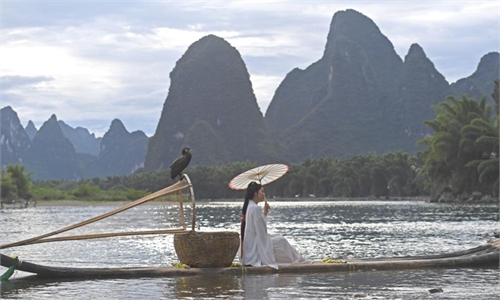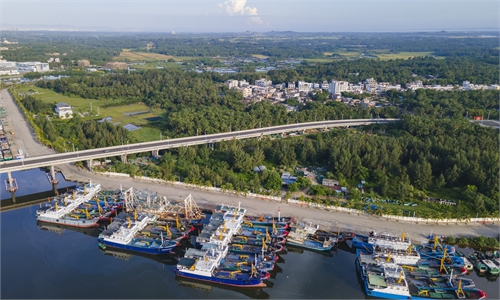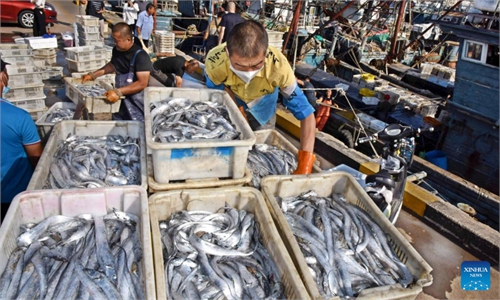GT Investigates: West, not China, eats most of world’s fish – debunking NYT, DiCaprio claims
China farms 80% of its demand, exports a lot to US, EU; facts defy Western smear

People eat seafood at a restaurant in New York City, the US on May 25, 2021. Photo: VCG
The New York Times (NYT) recently published a pair of articles, claiming that China's growing fish consumption and fishing activities are posing a threat to world maritime resources. This, one article claims, is "a good example" of China being "willing to flout international law" and "[harming] other countries for the sake of helping itself," even when it follows the law.
Such claims gained widespread attention after US actor Leonardo DiCaprio, who has been outspoken about environmental issues but also faces criticism for his luxurious lifestyle and hypocrisy, reposted them on social media. The actor further asserted that China's deep-sea fishing "has raised alarms about the impact on local economies as well as the commercial sustainability of ocean species."
As the US has mounted a full-fledged containment of China, such smearing claims from foreign media outlets and individuals against China are nothing new. And, a Global Times investigation into the claims shows that they are groundless and slanderous, and are aimed at smearing China.
In interviews with the Global Times, many industry insiders pointed out that China farms a majority (80.6 percent) of its fish consumption and is a major exporter of aquatic products. China's aquatic farming accounts over 60 percent of the world's total output. Unsurprisingly, the US and the EU are the biggest importers and consumers of the world's fish, they added.
Moreover, China follows international law in high-sea fishing and has taken a slew of measures to ensure sustainability in its fishing industry, industry insiders stressed, pointing to China's observing of fishing moratoriums in many regions to protect species.
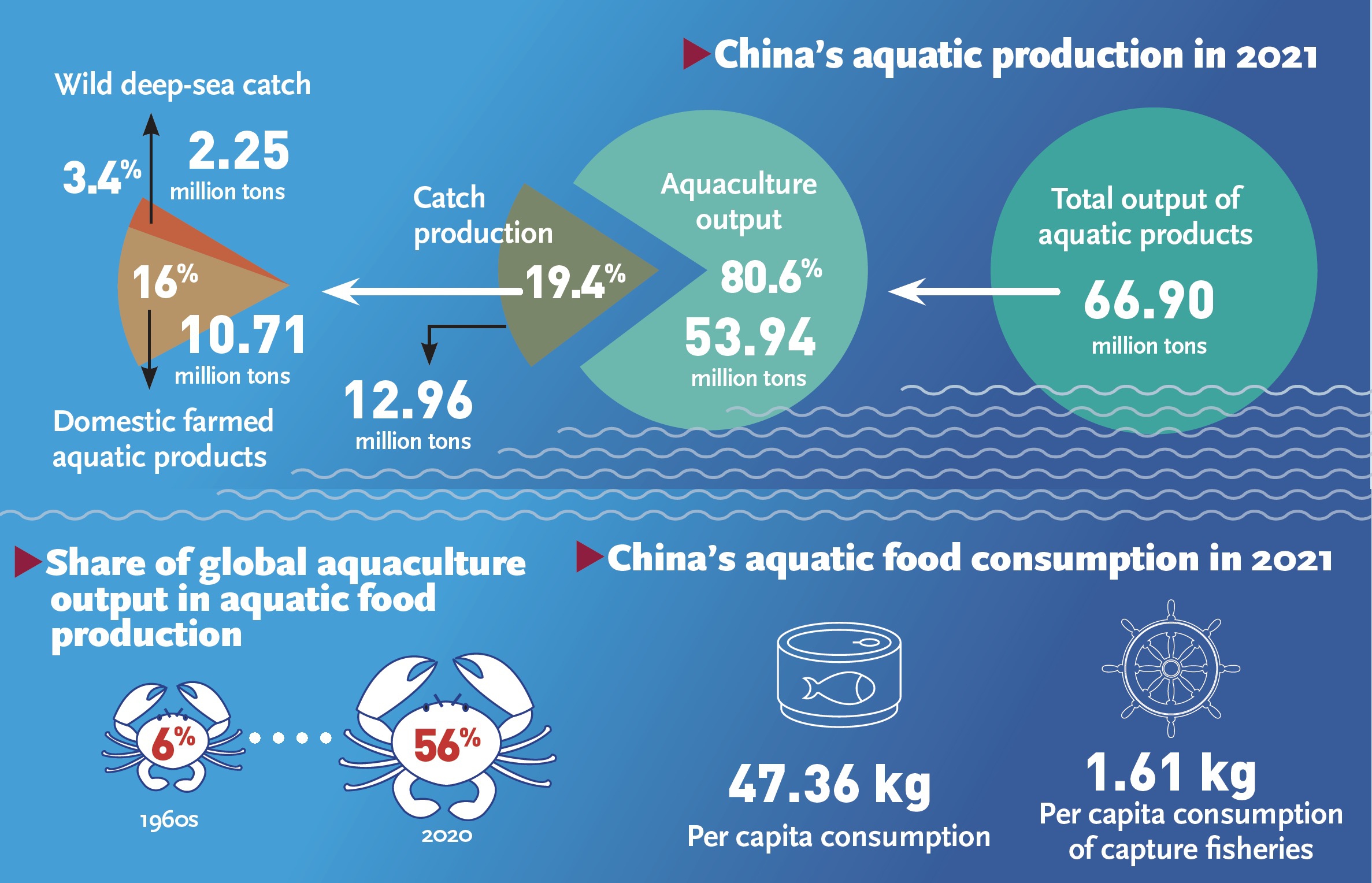
Graphic: Xiong Xiaoying/GT
More farming than fishing
"What the foreign actor and the foreign media claim is groundless and we believe that facts and figures tell everything," Chi Feiyue, deputy secretary general of the China Fisheries Association, told the Global Times on Wednesday.
China's consumption of aquatic products is mostly from self-farming instead of capturing, a trend that has been rising, as the country is putting more weight on securing food security, while minimizing the possible impact on the environment, both data and experts suggested.
The annual output of aquatic products in China is about 67 million tons. Among them, the output of aquaculture was 53.94 million tons, while the output of fishing was 12.95 million tons - the output ratio of aquaculture products and fishing products was 80.6 to 19.4, according to the latest national fishery economic statistics released by the Ministry of Agriculture and Rural Affairs.
In the global spectrum, China's output of aquaculture products accounts for about 60 percent of the world's total aquaculture output, according to media reports.
"That is to say, Chinese people eat fish mainly by farming, mirroring the fact that China is the only major fishery country in the world whose aquaculture output exceeds fishing output," Chi said.
Such a high self-reliance to engage in aquaculture is conducive to protecting the ocean, the expert added.
China has not only sufficiently met its local demand for fish for a country of 1.4 billion people, a great achievement in itself, but also helped the world by providing a large number of high-quality aquatic products, Chi said, noting that China is one of the largest exporters of aquatic products in the world for many years.
West eats the most
While Western media and individuals choose to turn a blind eye to the data mentioned above and are describing China as being the major threat to the world aquatic resources, they are missing the fact that it is the EU and the US that are the largest consumers and importers for aquatic products, industry insiders said.
A report from the Food and Agriculture Organization of the United Nations shows that the EU was the largest single market, accounting for 34 percent (and 16 percent, excluding intra-EU trade) of the global value of aquatic imports in 2020. In terms of individual countries, the largest importing country in 2020 was the US, accounting for 15 percent of world import value of aquatic products.
And China is a major supplier. In 2020, total aquaculture production in China was 49.6 million metric tons - excluding seaweed, making the country the world's biggest producer, accounting for 56.7 percent of the global volume, according to the UN report.
In developed countries such as the US and European nations, the output of autotrophic aquatic products is very low, mainly relying on marine fishing and imports, which experts said should take the main responsibility for the consumption of marine fishery resources.
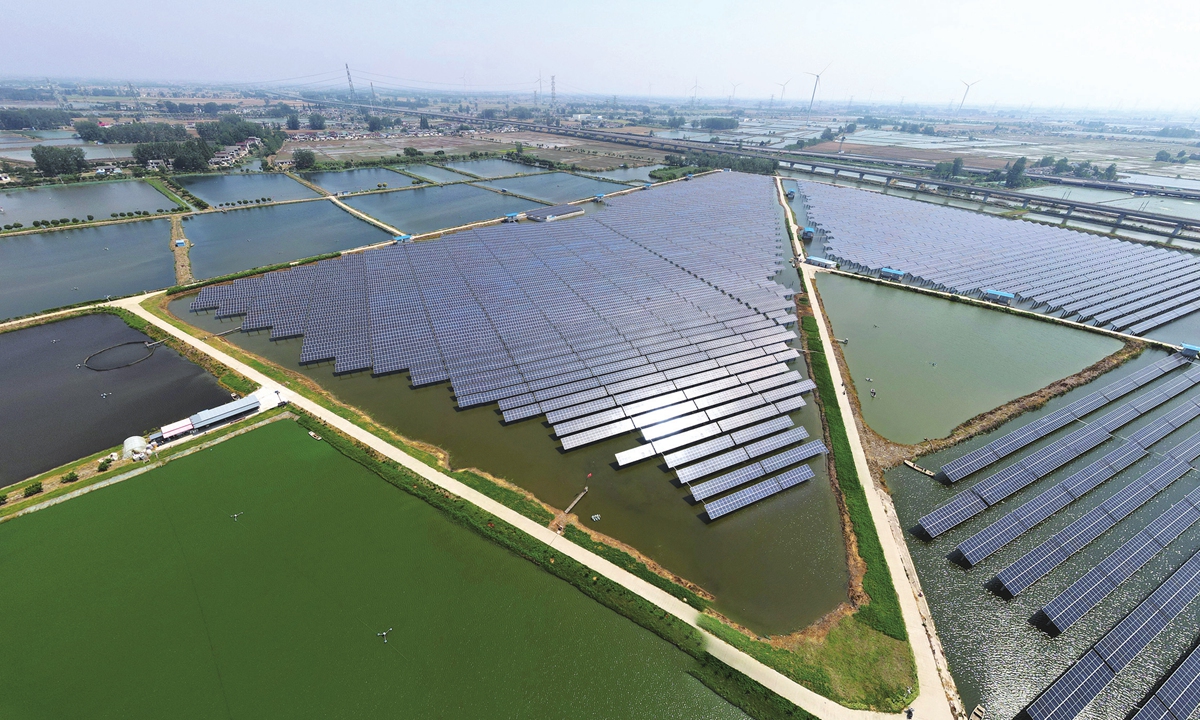
A "photovoltaic fishpond" in Yangzhou, East China's Jiangsu Province on June 16, 2022 Photo: VCG
China's protection efforts
China has long committed to preserving aquatic species. Since the 1990s, China has successively implemented fishing moratoriums in the East China Sea, the Yellow Sea, the Bohai Sea and the South China Sea, with the fishing moratorium has been extended from the first two months to four and a half months, Cui He, president of the China Aquatic Products Processing and Marketing Alliance, told the Global Times.
In addition, measures have been taken to reduce the number of fishing boats, control the power of fishing boats, and limit fishing in order to better preserve the regional aquatic resources, Cui said.
In terms of distant-water fisheries, China has shown the responsibility of a major country and promoted the construction of a community with a shared future for the ocean by strictly requiring distant-water fishing vessels to fish and produce in relevant high sea areas in accordance with the management measures of relevant regional fisheries organizations.
In responding to the NYT's claim that China accounted for nearly all the squid boats operating in the South Pacific, indicating the "big impact" to the species in the region, Chen Xinjun, dean of the College of Marine Sciences at Shanghai Ocean University, told the Global Times that "China has been participating in high seas squid fishing under the regulatory framework of the South Pacific Regional Fisheries Management Organization (SPRFMO), and keeps close contact with coastal countries, including Ecuador."
"Also, China's squid fishing operates far from the Galapagos Marine Reserve, which is about 1,000 kilometers off Ecuador's coast," Chen said.
China's squid fishing on the high seas of the South Pacific is a clean operation that has very little and limited impact on marine ecology compared with the trawling nets adopted by other members of the SPRFMO, Chen said, refuting allegations that China is engaged in "using trawling nets, which kill more fish than fishermen are allowed to."
"Even if the Chinese deep-sea squid fishing vessels are operating on the high sea near the outer limits of the Galapagos Islands' exclusive economic zone, the distance from the protected area is still more than 150 nautical miles," Chen said.
"How could such great distances affect the Galapagos Islands Marine Reserve and its biodiversity?" he asked.
Despite being a major fishery country, China's constant efforts in preserving the world aquatic resources have been significant.
Since 2020, independent fishing moratoriums on the high seas have been implemented in some areas of the high seas of the Atlantic Ocean and the Pacific Ocean for three consecutive years.
In 2022, the moratorium is extended to the high seas in the northern Indian Ocean, achieving full coverage of the high sea areas that are not yet managed by regional fisheries organizations, according to media reports.
All the evidences suggested that the Chinese fishing industry did not fish without control in the ocean as claimed by the NYT and other foreign individuals and organizations, Cui said.
